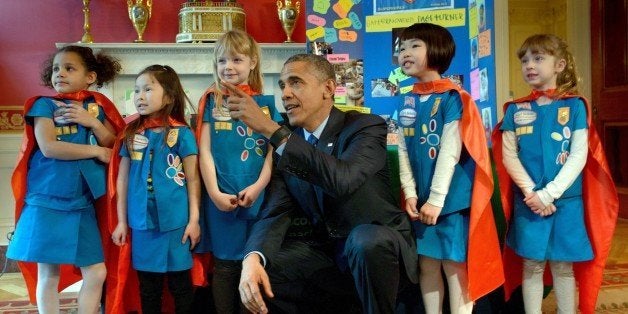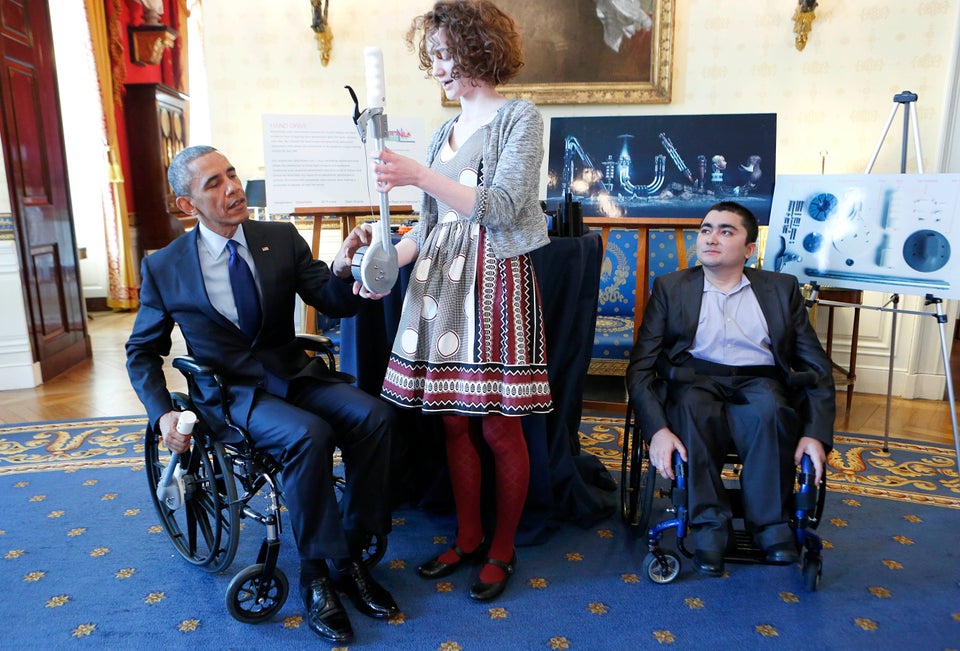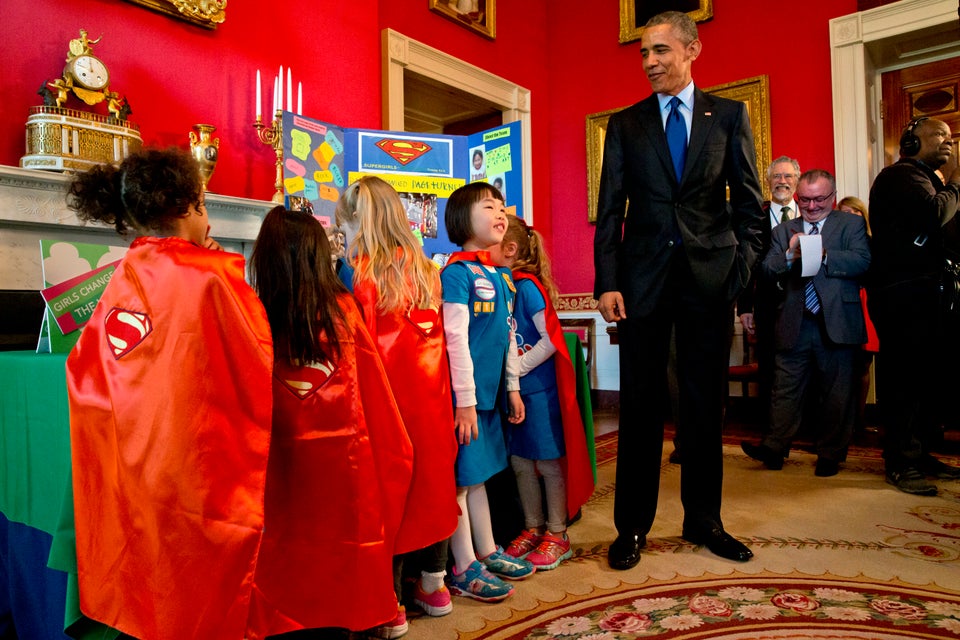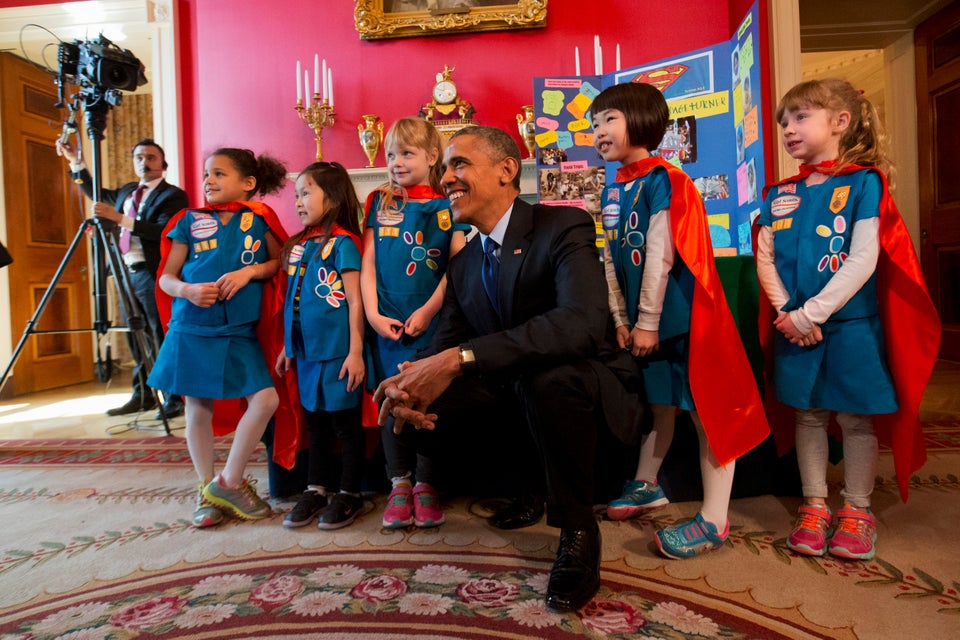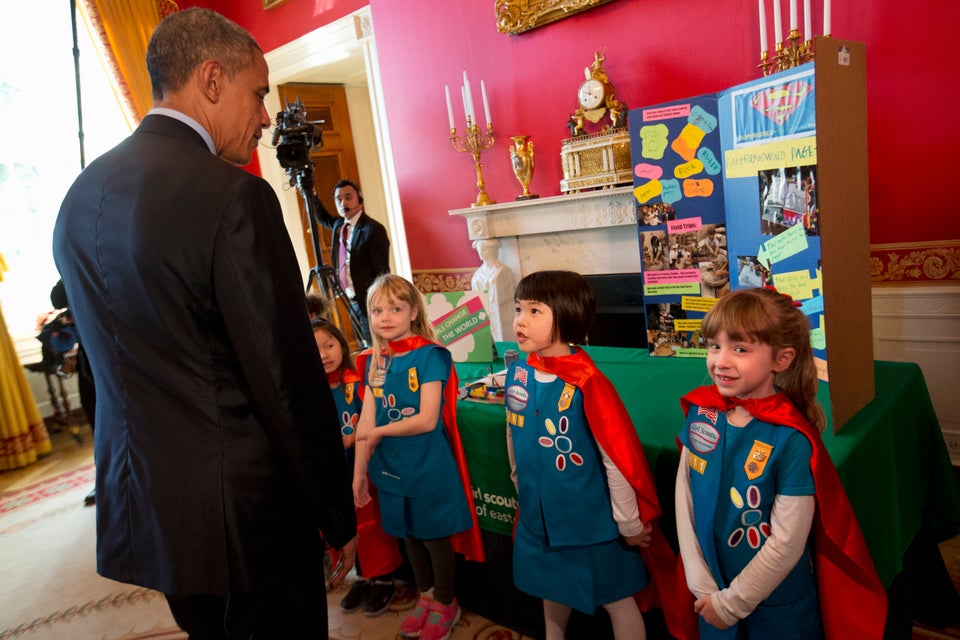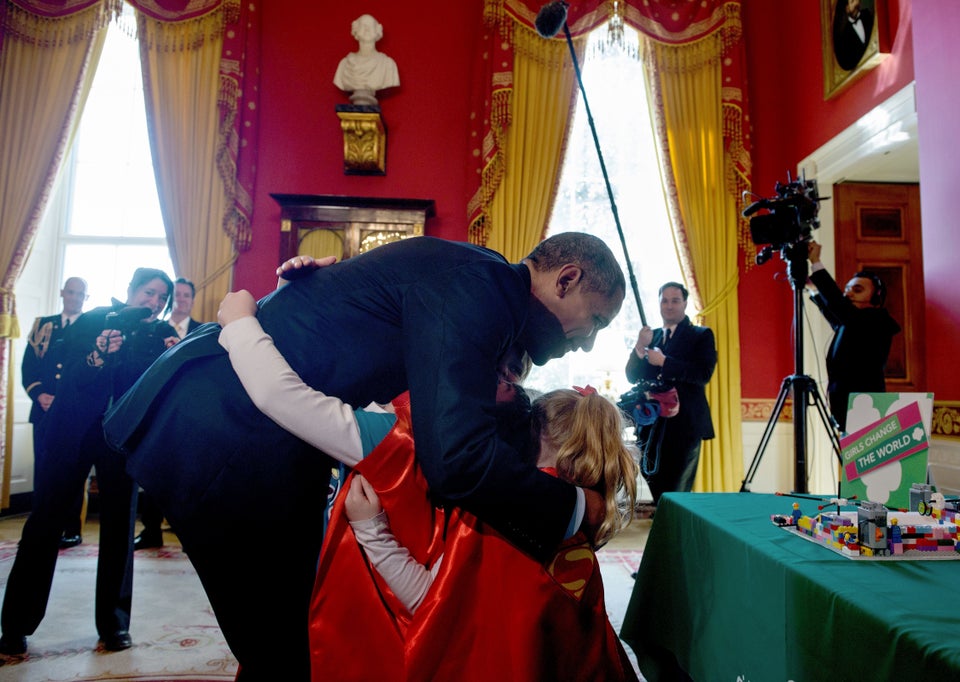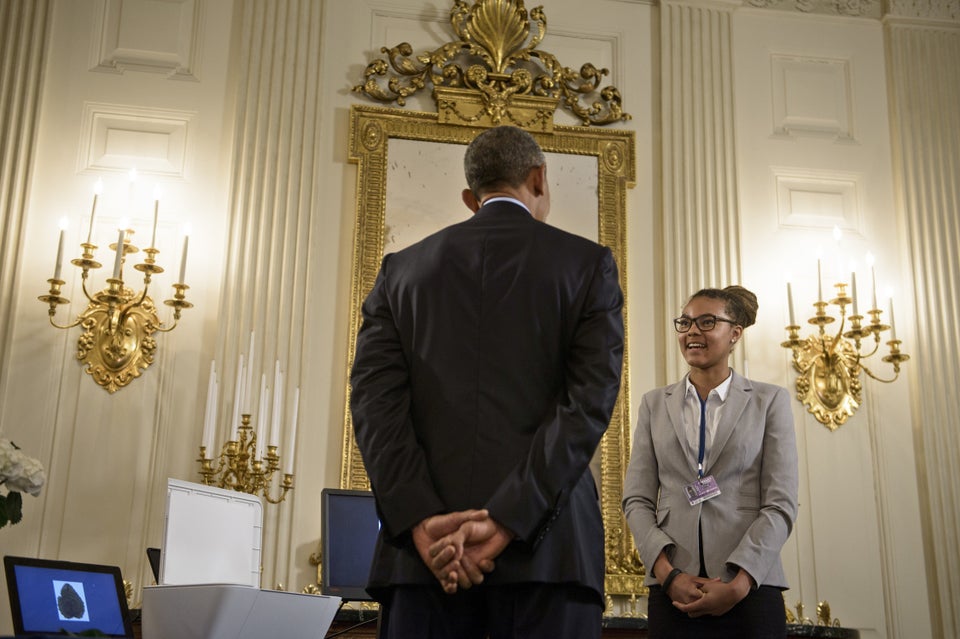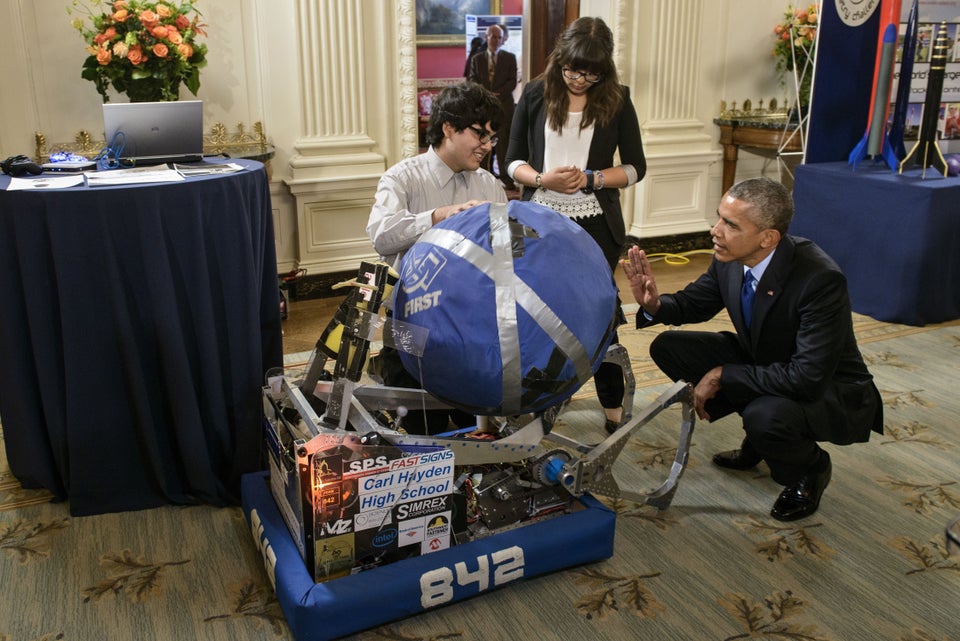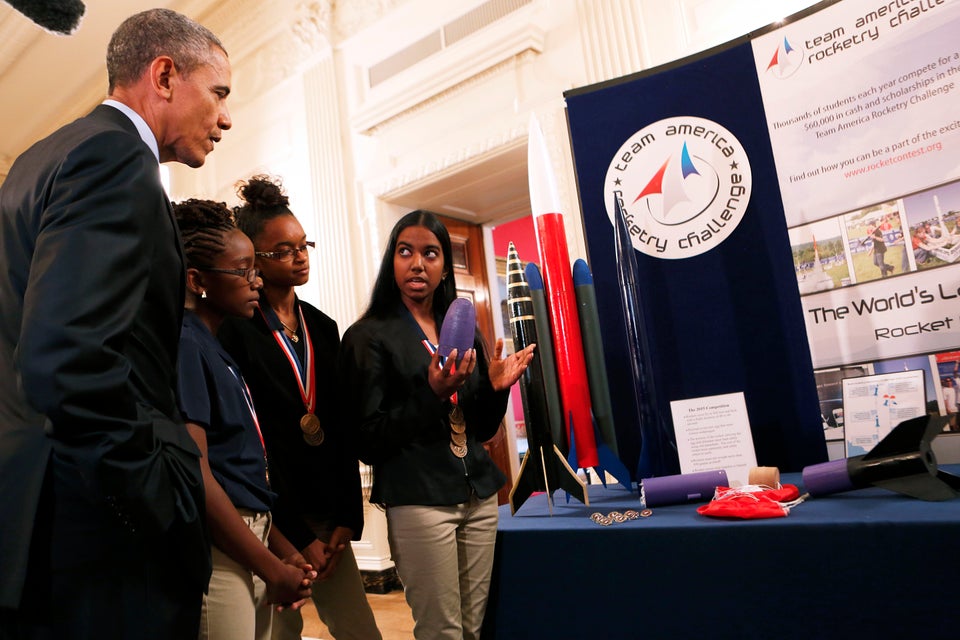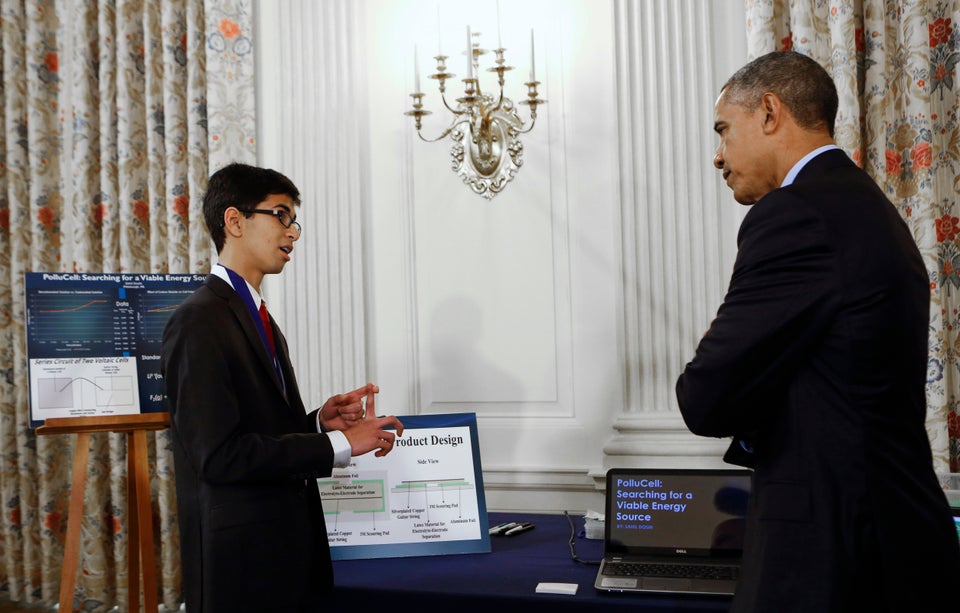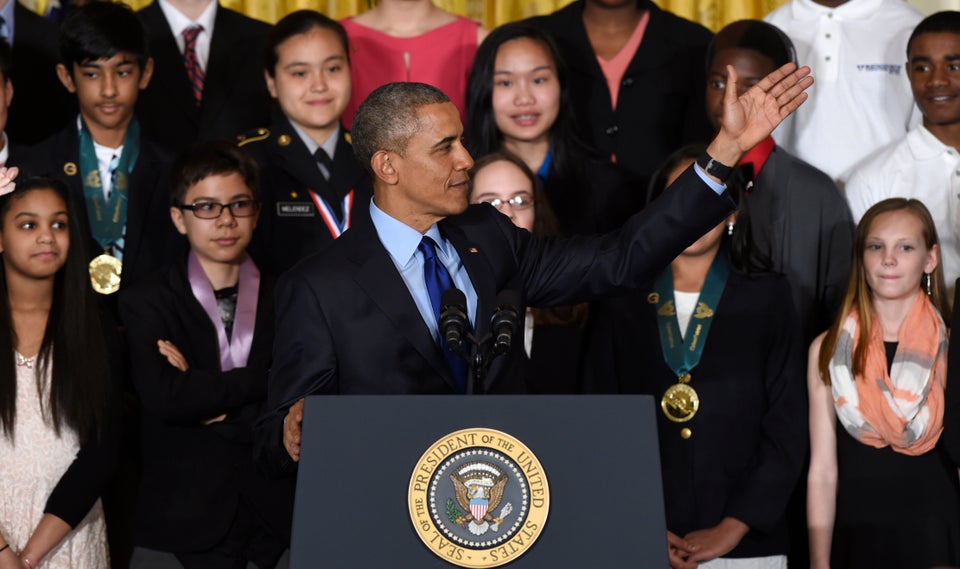A new spinal implant, an automated page turner and a more efficient way to make energy from algae. Those are among the projects that young scientists shared with President Barack Obama at the White House Science Fair on Monday.
"I want to thank you for inspiring me," Obama said in remarks at the science fair. "Keep exploring. Keep dreaming. Keep asking why. Don’t settle for what you already know. Never stop believing in the power of your ideas, your imagination, your hard work to change the world. "
The president gave special notice to a group of 6-year-old Girl Scouts from Tulsa, Oklahoma, the youngest scientists of the day, who built a page-turning device out of Legos to help individuals who are paralyzed or have arthritis. He said the "Supergirls" stressed to him that the device is just a prototype.
About 20 young scientists were honored on Monday, including Sophia Sánchez-Maes of Las Cruces, New Mexico, a high school senior who has studied algae as a potential fuel source, and Harry Paul of Port Washington, New York, who is now in his first year at Tufts and designed a new type of spinal implant after undergoing multiple surgeries for his own spine curvature.
In his remarks, the president touched on the issue of immigration, noting that at least two of the young scientists present were first-generation Americans and pushing to increase diversity in science, technology, engineering and math fields.
"We get the most out of all our nation’s talent -- and that means reaching out to boys and girls, men and women of all races and all backgrounds," Obama said. "Science is for all of us. And we want our classrooms and labs and workplaces and media to reflect that."
He noted some achievements his administration has made in expanding Internet access and adding more money for STEM education, and he challenged Congress to continue funding research so the young scientists have future opportunities in their fields.
"And my federal budget promotes a significant increase in the kinds of research that needs to happen. Unfortunately, some of the budgets coming out of Congress don’t make those same commitments," he said.
More photos from the event are below:
BRENDAN SMIALOWSKI/AFP/Getty Images
President Barack Obama tries a wheelchair powered by a rowing motion designed by Kaitlin Reed of Massachusetts during the 2015 White House Science Fair on March 23, 2015, in Washington, D.C. The fair celebrates student winners who created projects to illustrate mastery of science, technology, math or engineering.
Pool via Getty Images
President Barack Obama tries an attachable lever, created by Kaitlin Reed, that can make wheelchair movements easier, while Mohammed Sayed -- who developed a 3D-printed modular arm -- looks on.
BRENDAN SMIALOWSKI/AFP/Getty Images
Mohammed Sayed of Cambridge, Massachusetts, speaks to President Barack Obama about his modular 3D-printed and magnet-based wheelchair accessories.
AP Photo/Jacquelyn Martin
President Barack Obama tours an exhibit with 6-year-old Girl Scouts from Tulsa, Oklahoma, during the White House Science Fair in the Red Room of the White House. The Girl Scouts -- Emily Bergenroth, Alicia Cutter, Karissa Cheng, Addy O'Neal and Emery Dodson -- used Lego pieces and designed a battery-powered page turner to help people who are paralyzed or have arthritis.
AP Photo/Jacquelyn Martin
President Barack Obama poses with 6-year-old Girl Scouts from Tulsa, Oklahoma, during the White House Science Fair.
AP Photo/Jacquelyn Martin
President Barack Obama tours an exhibit by 6-year-old Girl Scouts during the White House Science Fair.
BRENDAN SMIALOWSKI/AFP/Getty Images
President Barack Obama receives a hug from Girl Scouts from Tulsa, Oklahoma, during the 2015 White House Science Fair.
BRENDAN SMIALOWSKI/AFP/Getty Images
Tiye Garrett of Denver, Colorado, explains her method of cheaply scanning leaves to share samples with other scientists.
BRENDAN SMIALOWSKI/AFP/Getty Images
Sergio Corral and Isela Martinez, both of Phoenix, Arizona, explain their robot to President Barack Obama.
BRENDAN SMIALOWSKI/AFP/Getty Images
Kristian Sonsteby of Wallenpaupack, Pennsylvania, watches as President Barack Obama makes waves to illustrate her solution to generate electricity from docks bobbing in the water.
Aude Guerrucci-Pool/Getty Images
President Barack Obama listens to Stephanie Bullock, who is part of a team from the U.S. Virgin Islands that designed rockets for the Team America Rocketry Challenge.
Aude Guerrucci-Pool/Getty Images
President Barack Obama listens to Sahil Doshi, 14, from Pittsburgh, Pennsylvania, who designed an innovative carbon-dioxide powered battery to reduce the environmental effects of pollution.
AP Photo/Susan Walsh
President Barack Obama spoke in the East Room of the White House during the 2015 White House Science Fair. Here, he jokingly gestures towards the exit doors after he smelled smoke during the event. The fair celebrated the student winners of a broad range of science, technology, engineering and math (STEM) competitions from across the country. The 2015 Science Fair has a specific focus on diversity and includes many students.
